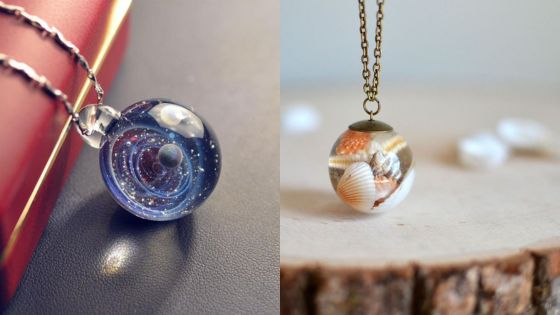Candles can enhance the ambiance of any space, and creating them at home offers a unique opportunity for creativity. This article presents ten DIY candle ideas that cater to various preferences and skill levels. From choosing scents to selecting decorative containers, the possibilities are endless and can be tailored to personal tastes.
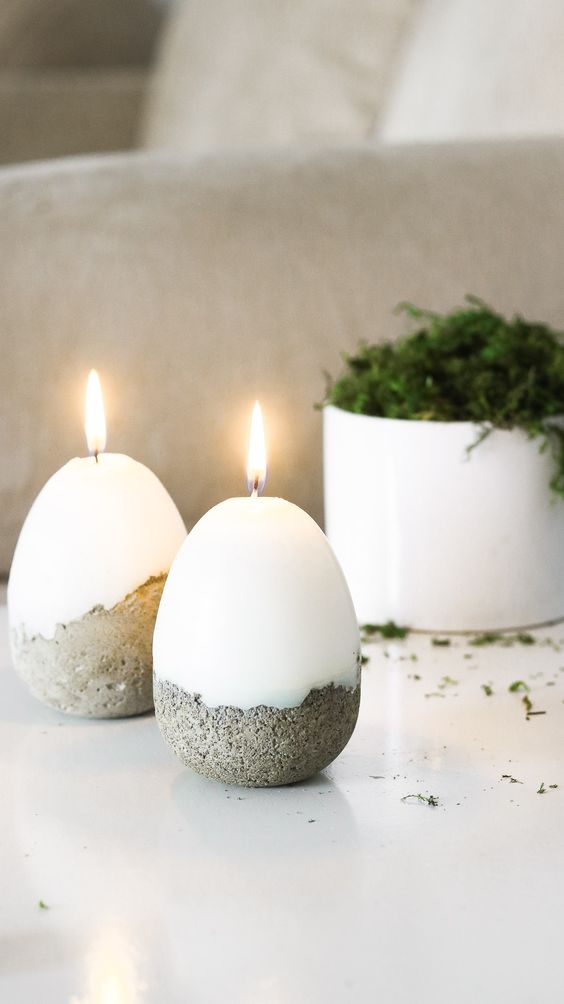
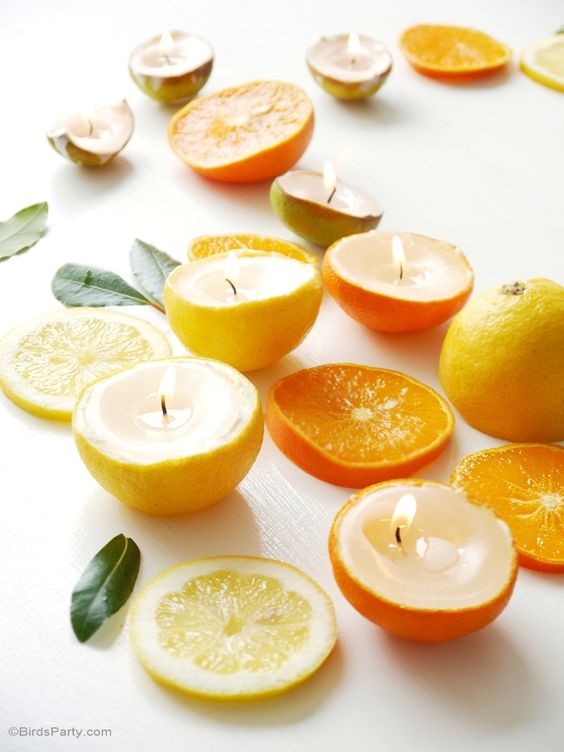
Crafting candles not only serves as a fulfilling hobby but also allows individuals to produce customized gifts for friends and family. Engaging in this creative process can be both relaxing and rewarding, making it an ideal project for anyone looking to explore their artistic side.
1) Soy Wax Mason Jar Candles
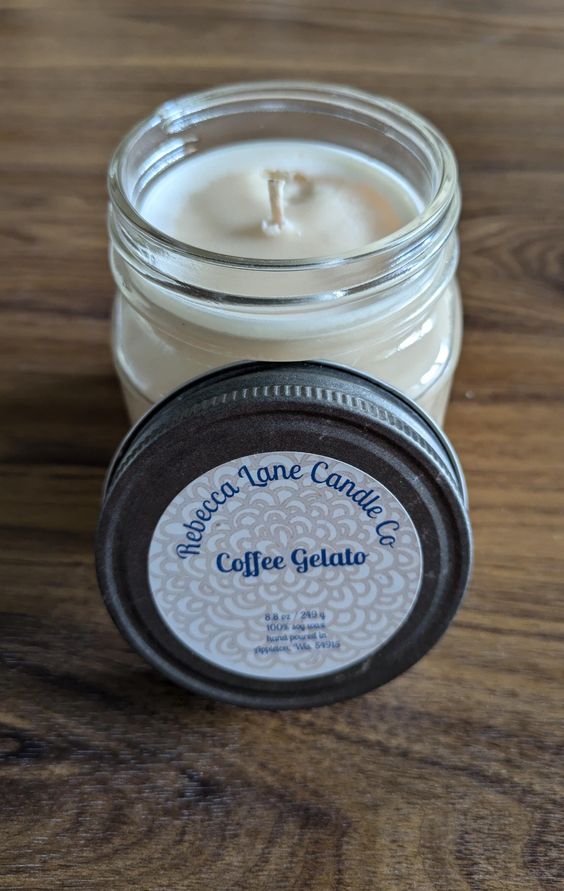
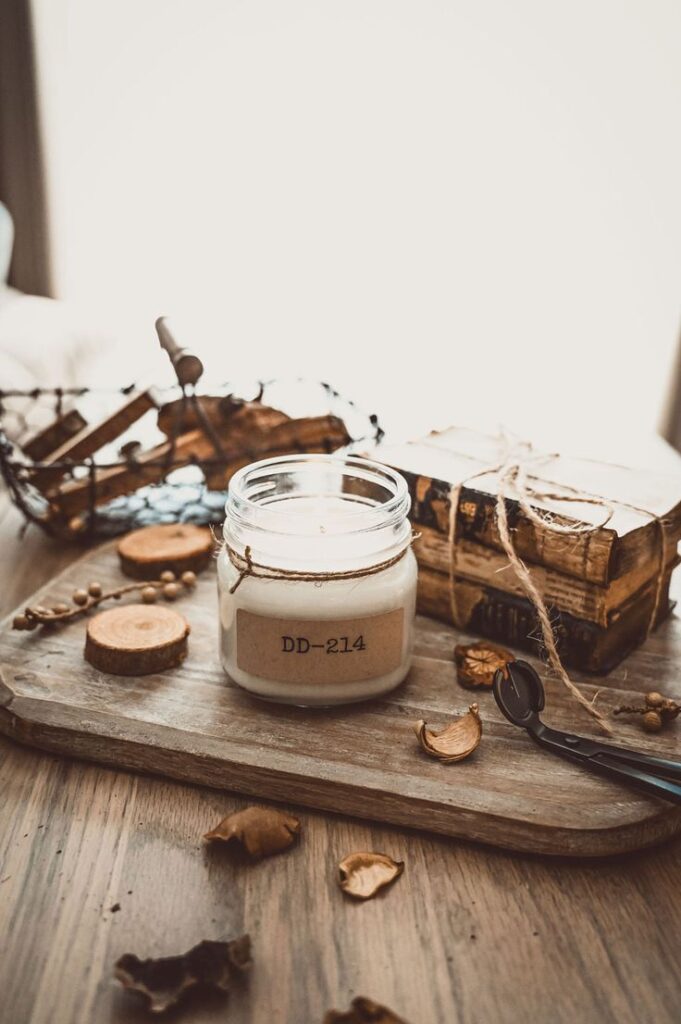
Soy wax mason jar candles are a popular choice for DIY enthusiasts. They provide a natural alternative to paraffin candles and burn cleaner, which makes them environmentally friendly.
To make these candles, one needs soy wax, a mason jar, candle wicks, and fragrance oils if desired. The process involves melting the soy wax and pouring it into the mason jar, placing the wick before it hardens.
Using mason jars adds a rustic charm to the candles. They can be decorated with twine, ribbons, or paint to match any decor. Once completed, these candles are perfect for home use or as personalized gifts.
Soy wax holds scent well, allowing for a pleasant aroma when burned. The candles typically have a longer burn time compared to other wax types, making them economical.
Such candles serve both functional and aesthetic purposes, enhancing any space while providing a warm glow.
2) Beeswax Taper Candles
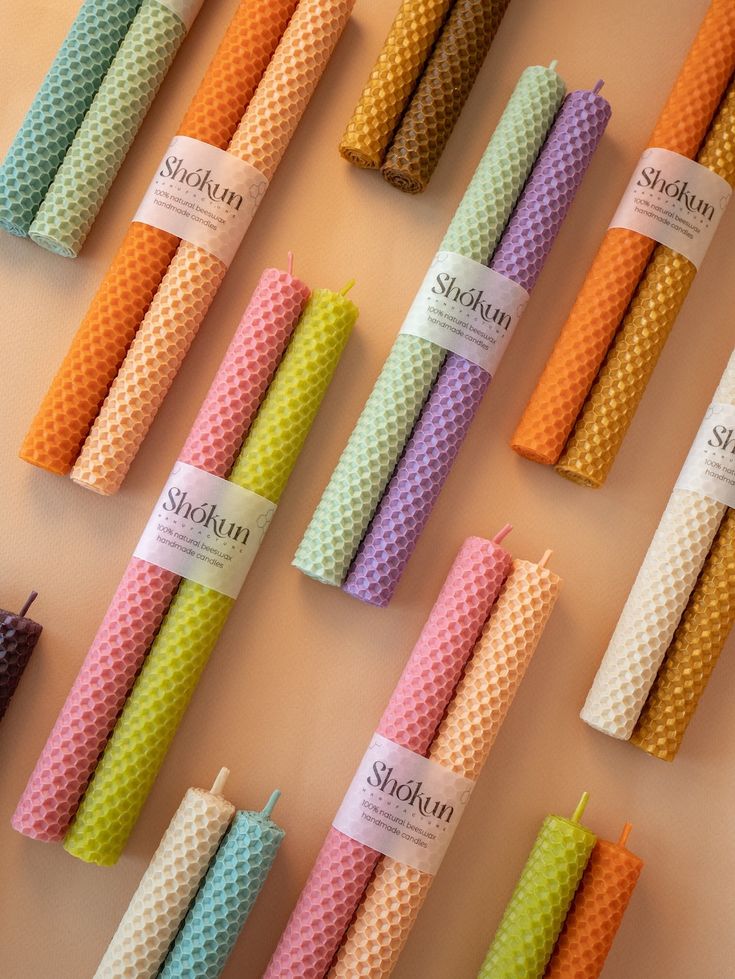
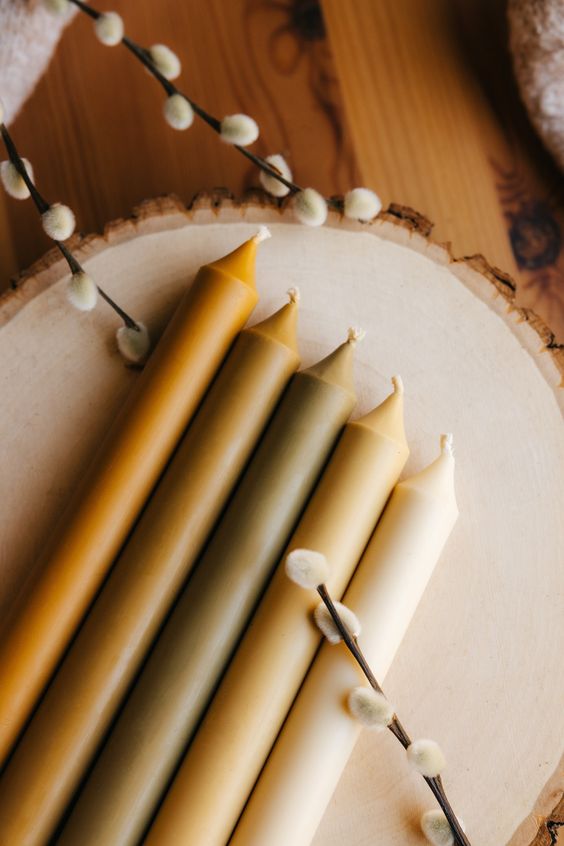
Beeswax taper candles are a popular choice for those interested in DIY candle-making. They offer a natural, non-toxic alternative to paraffin candles. Their subtle honey scent enhances any setting.
To create beeswax tapers, one can start with beeswax sheets. They can be easily rolled to form uniform candles. The process requires minimal equipment, making it accessible for beginners.
Crafters can customize the size and shape of the candles. For traditional candle holders, it is essential to maintain a consistent diameter. This ensures a snug fit and balanced burn.
Beeswax candles burn longer and cleaner than many other types. This longevity makes them ideal for occasions where extended light is desired.
Adding color or scent can personalize the candles further. However, it’s best to use natural colorants or essential oils. This maintains the purity of beeswax’s unique properties.
3) Scented Wooden Wick Candles
Scented wooden wick candles provide a unique and calming experience. The wooden wick offers a soft crackling sound, reminiscent of a fireplace, enhancing the ambiance in any setting.
To create these candles, one can start with natural wax such as soy or beeswax. These waxes are eco-friendly and burn cleanly, making them ideal choices.
Choosing essential oils for fragrance is essential. Scents like lavender or eucalyptus can promote relaxation, while citrus aromas can invigorate a space. A blend of oils can also create a customized scent profile.
The wooden wick requires some preparation. It should be trimmed to about 1/4 inch before lighting. This ensures a stable flame and enhances the fragrance throw.
When pouring the wax, a temperature around 140-160°F is preferred. This allows the essential oils to bind well with the wax.
Crafting scented wooden wick candles can be a rewarding project. They not only serve as decorative pieces but also enrich the atmosphere with appealing scents.
Pressed Flower Candles
Pressed flower candles offer a beautiful blend of nature and craftsmanship. This DIY project allows individuals to create unique, decorative candles infused with the charm of flowers.
To make pressed flower candles, gather materials like clear wax, wicks, and dried flowers. Suitable flowers include pansies, violets, and daisies, as they maintain their colors well.
Melt the wax in a double boiler and prepare the container. Once the wax is melted, carefully arrange the pressed flowers inside the container. Pour the wax slowly to avoid disturbing the flowers.
After pouring, allow the candles to cool and set completely. Once hardened, trim the wick to the desired length. The result is a stunning candle that adds a personal touch to any space.
Pressed flower candles can serve as thoughtful gifts or charming decor pieces. Their aesthetic appeal enhances any room while providing a cozy atmosphere when lit.
5) Layered Color Block Candles
Layered color block candles offer a visually striking way to enhance decor. They involve pouring different layers of colored wax, creating a vibrant, multi-hued effect.
To start, one needs wax in various colors, candle wicks, and a heat-safe container. Each layer requires melting the wax separately and allowing it to cool slightly before pouring in the next color. This technique enables distinct, sharp lines between layers.
Timing is crucial. If the poured wax is too hot, it may mix with the layer below, resulting in blurred lines. Conversely, allowing it to cool too much can prevent layers from bonding.
Another essential tip is to use equal amounts of wax for each layer to ensure the candle burns evenly. Once all layers are set, trimming the wick allows it to burn properly.
This candle-making project is suitable for both beginners and experienced crafters. It offers endless possibilities for color combinations, making it an enjoyable and creative endeavor.
6) Citronella Outdoor Candles
Citronella outdoor candles are a popular choice for those looking to enhance their outdoor spaces. They are known for their ability to repel insects, making them ideal for patios and backyards.
To create citronella candles, start with a wax base, such as soy or beeswax. Add citronella essential oil to the melted wax to achieve the desired scent and repellent properties.
Choosing the right container is important, as it should withstand outdoor conditions. Decorative jars or metal tins work well and add an aesthetic touch.
When pouring the wax, ensure the wick is centered. This will promote even burning and maximize the candle’s effectiveness.
Burning citronella candles during evenings can create a pleasant atmosphere while keeping mosquitoes at bay. They can be an enjoyable addition to outdoor gatherings.
7) Herb-Infused Candles
Herb-infused candles combine natural scents with the calming aesthetics of herbs. This type of candle not only provides light but also infuses spaces with pleasant fragrances.
To create herb-infused candles, one can use a variety of herbs such as lavender, rosemary, or mint. These herbs can be steeped in wax or added directly to melted wax for a more pronounced scent.
Using essential oils from these herbs can enhance the fragrance. This allows for more control over the candle’s scent strength and adds therapeutic benefits.
When making these candles, it’s essential to ensure that the herbs are completely dry. Fresh herbs can introduce moisture, which may hinder the candle’s burning quality.
In addition to their delightful aromas, herb-infused candles can also serve as attractive decor. The inclusion of herbs provides visual appeal, making them suitable for various settings, from homes to gatherings.
Experimenting with different combinations of herbs can lead to unique scents. Each blend can create an inviting atmosphere tailored to personal preferences.
8) Sea Shell Gel Candles
Sea shell gel candles offer a unique and visually appealing way to incorporate natural elements into candle making. They use gel wax, which allows for a transparent effect that highlights the shells inside.
To create these candles, one begins by melting gel wax in a double boiler. Once melted, the wax can be poured into a mold or directly into a shell, ensuring it adheres well.
It is essential to choose intact and clean sea shells for this project. Larger shells can hold more gel and provide a more striking display. Adding decorative elements like sand or small stones can enhance the beachy aesthetic.
When the gel wax cools and solidifies, a wick is added. The wick should be centered to ensure even burning. They emit a soft glow, perfect for setting a relaxed atmosphere.
These candles can serve as centerpieces for beach-themed events or just add a touch of nature to home decor. Making sea shell gel candles is a fun project for crafting enthusiasts of all levels.
9) Floating Candles
Floating candles add a unique touch to any setting. They create an enchanting ambiance, perfect for romantic dinners or festive gatherings.
To make floating candles, simple materials are required. Melt wax using a double boiler and add fragrance oils if desired. Pour the wax into small molds or containers, leaving space for a wick.
Using a small wick, secure it at the bottom of the mold. Once the wax hardens, place the candles in a bowl filled with water. Their buoyancy allows them to float gracefully.
For added flair, incorporate flowers or decorative stones in the water. This enhances the visual appeal and personalizes the arrangement.
Floating candles can be customized for various occasions. Different colors and shapes can complement themes like weddings or seasonal celebrations.
Safety is essential when using floating candles. Always supervise the arrangement and avoid placing them near flammable materials.
10) Coffee Bean Candles
Coffee bean candles are a unique and aromatic addition to any space. They combine the warm scent of coffee with the soft glow of candlelight. This DIY project is both simple and visually appealing.
To create coffee bean candles, gather coffee beans, wax, wicks, and a heat-resistant container. Start by melting the wax in a double boiler, ensuring it reaches the right temperature. Once melted, add any desired fragrance oils for an enhanced aroma.
Next, secure the wick at the bottom of the container. Pour a layer of melted wax into the container, then sprinkle a layer of coffee beans. Repeat this process until the container is filled. The layers create a beautiful effect and allow the coffee scent to be released as the candle burns.
Once the wax is set, trim the wick and the candle is ready to use. As it burns, the coffee beans will release a delightful fragrance. These candles not only look great but also make thoughtful gifts for coffee lovers.
Materials Needed
Gathering the right materials is essential for successful DIY candle making. Below are the essential supplies required to get started, along with some optional add-ons that can enhance the candle-making experience.
Essential Supplies
Wax: Paraffin, soy, or beeswax are common types. Soy wax is popular for its eco-friendliness and ease of use.
Wicks: Choose the right size wick based on the candle’s diameter. Cotton or wooden wicks work well, each providing a different burn experience.
Containers: Glass jars or metal tins are preferred for holding the melted wax. Ensure they are heat-resistant to prevent cracking.
Double Boiler: A double boiler or a makeshift version using a pot and a heat-safe bowl is necessary for melting the wax evenly.
Thermometer: Monitoring the wax temperature is important to achieve proper pouring and scent release.
Fragrance Oils: Select quality fragrance oils that are suitable for candle making to create the desired scent profile.
Optional Add-Ons
Dyes: Candle dyes or colorants can be added to achieve specific colors. Liquid and solid dyes are commonly available.
Additives: Consider adding stearin to enhance opacity and hardness, improving candle quality and burn time.
Decorative Elements: Incorporate items such as dried flowers, herbs, or glitter into the candle for a personalized touch.
Molds: Silicone or metal molds can be used for creating unique shapes. This allows for more creativity beyond standard containers.
Scented Herbs: Rosemary or lavender can enhance the fragrance naturally, providing a unique aroma when burned.
These materials and options allow candle makers to customize their creations, making each project distinctive.
Candle Making Techniques
Mastering candle making involves selecting the right technique for the desired outcome. Two popular methods are melt and pour and cold process, each offering unique benefits and creative possibilities.
Melt and Pour
Melt and pour is a straightforward technique ideal for beginners. It requires pre-made wax blocks, which are melted down in a microwave or double boiler. The melted wax can then be poured into molds to create various shapes and sizes.
Key steps include:
- Preparation: Gather supplies such as wax, a pouring container, and molds.
- Melting: Heat the wax until it reaches a liquid state, typically 140-180°F.
- Additives: Incorporate dyes or fragrance oils while the wax is still warm.
- Pouring: Carefully pour the mixture into molds, allowing it to cool and set.
This method is favored for its simplicity and versatility, making it perfect for custom creations.
Cold Process
Cold process candle making offers a more traditional approach that allows for control over ingredients. This method involves mixing wax with fragrance oils and stabilizers at room temperature, allowing for a longer curing time.
Important considerations include:
- Ingredient Selection: Choose high-quality wax, wicks, and fragrance oils.
- Mixing: Combine wax and additives meticulously to achieve the desired scent and burn quality.
- Molding: Pour the mixture into molds and allow it to set for an extended period, usually 24-48 hours for proper curing.
- Finishing Touches: Trim wicks and apply any decorative elements as desired.
This technique requires more knowledge and patience but results in candles that burn more cleanly and efficiently.
Safety Tips
Creating DIY candles can be enjoyable, but safety is crucial. Proper precautions must be taken when handling hot wax and using fragrances. The following tips provide essential guidelines to ensure a safe candle-making experience.
Handling Hot Wax
When working with hot wax, it is vital to wear protective gear. This includes heat-resistant gloves and eye protection to shield against splashes.
Always use a double boiler for melting wax. This method prevents overheating and reduces the risk of fire.
Keep a designated area for candle making, free from flammable materials. A fire extinguisher should be nearby for emergencies.
It’s also important to monitor the melting process. Wax should never be left unattended on the heat source.
Before pouring wax into molds, let it cool slightly to around 140°F (60°C). This temperature reduces the risk of burns.
Using Fragrances
When adding fragrances to candles, choose products specifically designed for candle making. Many common scents can ignite at high temperatures, which increases risk.
Measure fragrance oils accurately. The typical ratio is about 1 ounce of fragrance per pound of wax. Using too much can also cause smoke during burning.
Always work in a well-ventilated area. Proper airflow minimizes inhalation of fumes.
Avoid using essential oils with high flash points, such as citrus oils, as they can be flammable.
Lastly, test your candle’s scent throw before making a large batch. This ensures a pleasant aroma without compromising safety.
Frequently Asked Questions
This section addresses common inquiries regarding DIY candle making. It covers essential techniques for beginners, creative design ideas, and market differentiation for homemade candles.
What are some simple steps for beginners to make DIY candles?
Beginners should start by gathering essential materials, including wax, wick, and a container. They can melt the wax using a double boiler, then add fragrance oils before pouring it into the container. Once cooled, they should trim the wick to the desired length.
How can I create unique homemade candles?
To create unique candles, experiment with different wax types and blends, such as soy or beeswax. Incorporating various fragrance combinations can enhance individuality. Adding natural colors or using unusual containers can also create one-of-a-kind designs.
What are some creative design ideas for crafting artisan candles?
Artisan candles can feature layers of different colors, creating a striped effect. Pressed flowers can be embedded for a decorative touch. Additionally, using molds in diverse shapes adds visual interest to the final product.
What innovative items can I incorporate into homemade candles for added appeal?
Incorporating items like dried herbs, citrus slices, or coffee beans can make candles visually interesting. Embedding crystals or using decorative containers can also enhance the aesthetic. Unique wick types, such as wooden wicks, provide both style and functionality.
What is a cost-effective method for producing candles at home?
To save costs, one can purchase wax in bulk, which reduces the price per unit. Using recycled containers is another economical approach. She can also opt for soy wax, which is often more affordable than other materials while still providing good quality.
How can I differentiate my DIY candles to make them marketable for sale?
Carrying a distinct brand story or theme can attract buyers. Custom packaging and labeling create a professional appearance. Offering limited editions or seasonal scents can also entice customers and stand out in the market.
- 0shares
- Facebook0
- Pinterest0
- Twitter0
- Reddit0

